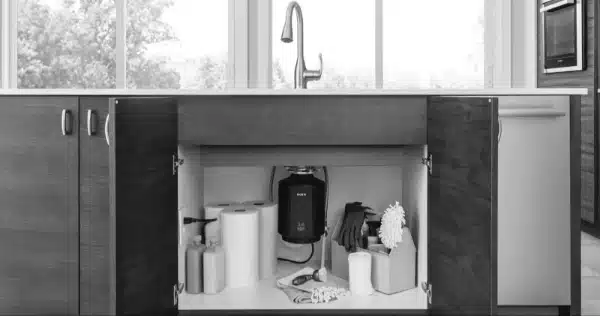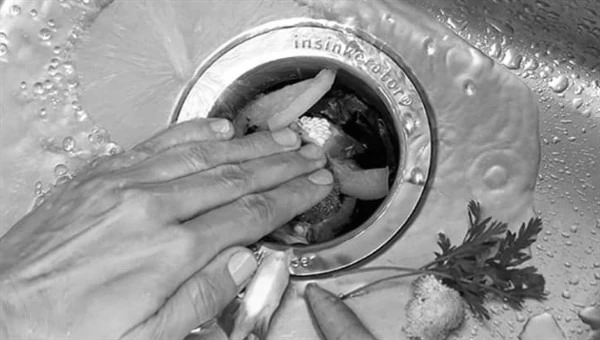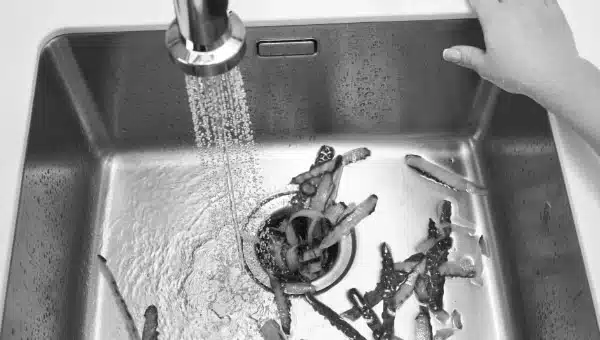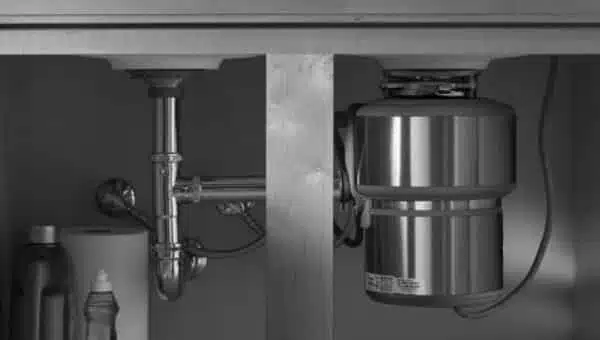Are you tired of dealing with a noisy, inefficient garbage disposal? Perhaps it’s time to consider upgrading to a new garbage disposal installation. Not only can a new unit provide you with a more harmonious hum in your kitchen, but it also offers a range of benefits that can make your life easier. In this blog post, we’ll explore why you should upgrade to a new garbage disposal, the soothing symphony of a quiet garbage disposal humming, the ease of maintenance, the longevity of a new unit, and how to budget for this essential kitchen appliance.
Table of Contents
Why Upgrade to a New Garbage Disposal?
Imagine stepping into your kitchen, where the harmony of cutting, sizzling, and the occasional taste-testing are the only sounds you hear. Now, add the grating noise of an old garbage disposal to that mix – not quite the kitchen symphony you were hoping for, right? Upgrading to a new garbage disposal installation can change that tune quickly, turning your kitchen into a place of culinary peace once again. But the benefits don’t stop at just serenading your ears with its quiet hum.
First off, let’s talk about being a friend to our planet. Newer garbage disposal models are like the electric cars of kitchen appliances – they’re designed to be more energy-efficient, which means they gobble up less power and leave a smaller carbon footprint. This is a win-win, as you get to save some green (both the planet and your wallet will thank you). Plus, with utility bills on a diet, you can allocate those savings to more important things, like that gourmet coffee you love.
Then there’s the quiet efficiency of these modern marvels. Older models can sound like a rock concert gone wrong, but the latest garbage disposals operate with such discretion that you’ll wonder if they’re even working. This upgrade means you can carry on with your kitchen conversations without having to raise your voice over the sound of food scraps being pulverized.
But perhaps the most melodious note in the song of reasons to upgrade is the boost to your home’s value. It’s true – adding a sleek, efficient garbage disposal to your kitchen repertoire not only makes life easier and your kitchen routines smoother but also adds a note of modernity that potential buyers will love if you ever decide to sell your home. It’s like hitting the high note in your home’s performance, making it more appealing to those looking to buy.
In the grand opera of home improvements, upgrading your garbage disposal might seem like a small act, but it’s one that can dramatically improve the functionality and harmony of your kitchen. So, if your old unit is more of a cacophony than a symphony, it might be time to consider giving your kitchen the encore it deserves with a new garbage disposal installation. After all, who wouldn’t want their kitchen to be a place where culinary dreams sing and the only dramas are those found in your favorite cooking shows?
The Symphony of Silence: Garbage Disposal Humming
Have you ever thought about the soundtrack of your kitchen? The sizzle of the skillet, the chop-chop of fresh veggies, and that old garbage disposal that sounds like it’s trying to start a one-appliance band in the worst way possible. If you’re ready to retire that aging rockstar in favor of something a little more harmonious, then let’s talk about the melodious hum of a new garbage disposal.
Upgrading to a new garbage disposal installation brings with it the sweet sound of… well, almost nothing. And that’s the beauty of it. The newest models on the market pride themselves on being the strong, silent types; they’re all about action without the announcement. Imagine flipping the switch and instead of bracing for a mechanical uproar, you’re greeted with a gentle hum, a soft background chorus that whispers, “I’ve got this,” as it whisks away the unwanted remnants of your culinary conquests.
This isn’t just a minor upgrade; it’s a transformative experience. Gone are the days of pausing conversations, turning up the TV, or waiting until the din dies down to continue your kitchen activities. With a new garbage disposal humming along, you can smoothly transition from one task to the next, uninterrupted by acoustic assaults. It’s like your kitchen has been given a volume knob, and finally, you have control over it.
But this silence speaks volumes about more than just peace and quiet. It’s a testament to the leaps and bounds in garbage disposal technology. These modern marvels are designed not only for stealth but for efficiency and durability. They tackle the toughest of kitchen waste with the grace of a gazelle, and all you hear is a reassuring hum, the sound of efficiency in action.
This symphony of silence is no accident. It’s the result of meticulous engineering, aimed at reducing noise without compromising power. Vibration is minimized, and insulation is maximized, resulting in a performance so smooth, you might find yourself checking to make sure it’s actually working. But worry not—while it may be out of sight and out of mind, your new garbage disposal is diligently performing its duties, all while maintaining the tranquil ambiance of your kitchen.
So, if you’re looking to elevate your kitchen’s soundtrack, consider the serene hum of a new garbage disposal as your next upgrade. It’s an investment in quietude, efficiency, and the overall harmony of your home. After all, the kitchen is the heart of the home, and every heart deserves a peaceful rhythm.
Encore! The Ease of Garbage Disposal Maintenance
Dive into the harmonious world of garbage disposal maintenance, where the only drama unfolds when you decide to spice things up with a zesty lemon peel performance. The spotlight shines brightly on the new generation of garbage disposals, designed not only for their robust performance but also for their low-maintenance lifestyle. Yes, you read that right: maintaining these kitchen maestros is as simple as a do-re-mi.
Gone are the days of wrestling with complex machinery or fearing the dreaded sink dive to untangle the mysteries lurking below. The new era of garbage disposals comes with user-friendly features that make upkeep as effortless as flipping a switch. Imagine a world where keeping your disposal in tip-top shape involves nothing more than a casual rendezvous with some ice cubes or the occasional citrus peel serenade. It’s not just maintenance; it’s a kitchen ritual that’s almost as satisfying as hitting that perfect note in your favorite song.
Regular performances of “Ice Cube Crunch” or “Citrus Peel Waltz” not only keep your disposal clean but also sharp and ready for whatever kitchen scraps come its way. Think of it as the disposal’s daily gym routine, ensuring it stays fit, healthy, and ready to tackle any challenge. And the best part? You’re the conductor, orchestrating these simple yet effective routines that guarantee a long and harmonious life for your disposal.
But wait, there’s more! Ever heard the one about the baking soda and vinegar concerto? It’s a classic maintenance melody for those times when your disposal needs a little extra TLC. This dynamic duo performs a fizzing dance that not only cleans but also deodorizes, leaving your disposal—and your kitchen—smelling like the fresh start of a new day. It’s the kind of tune that makes you want to twirl around your kitchen, basking in the glory of a job well done.
And for the grand finale, let’s talk about the silent guardians of the garbage disposal universe: the modern, easy-to-remove splash guards. These unsung heroes make cleaning a breeze, ensuring that your disposal stays in harmony without skipping a beat. Just a quick rinse under the faucet, and you’re back in business, ready to face the next culinary adventure with a clean and confident disposal.
In the world of garbage disposal maintenance, simplicity takes center stage. With these new units, you’re not just getting an appliance; you’re getting a promise of hassle-free upkeep, allowing you more time to enjoy the sweeter symphonies of life. So, embrace the encore, and let the ease of garbage disposal maintenance play the background score to your kitchen’s daily opera. After all, every great performance deserves an effortless curtain call.
The Longevity Overture: Garbage Disposal Lifespan
Embarking on the journey of a new garbage disposal installation is akin to nurturing a long-term relationship in your kitchen—the kind that thrives on mutual respect, a touch of maintenance, and the occasional serenade of citrus peels. The magic of a new unit isn’t just in its harmonious hum or its voracious appetite for kitchen scraps; it’s also in the promise of a lasting companionship. Let’s face it, nobody enjoys the breakup drama with an appliance, especially when it’s been a key player in your culinary symphony.
Older garbage disposals tend to become like that one band member who’s always out of tune, disrupting the melody and harmony of your kitchen’s daily performances. They falter, fuss, and eventually fade, leaving you in a lurch right when you’re about to hit the high note with your legendary lasagna. On the other hand, the new generation of garbage disposals is more like the virtuoso who plays every note with precision, reliability, and flair, promising years of encores.
One might wonder, “How long can this virtuoso grace my kitchen stage?” Well, let me tell you, with the proper care—a symphony of regular cleaning rituals, thoughtful use, and avoiding the dreaded non-disposables (we’re looking at you, chicken bones and coffee grounds)—a new garbage disposal can serenade you and your kitchen for a decade or more. Imagine, ten years of peaceful meal prep and clean-up, all underpinned by the reliable hum of your disposal.
But here’s where it gets interesting. Just like fine-tuning a musical instrument ensures its longevity and performance, the same principle applies to your garbage disposal. The relationship you build with this appliance through regular maintenance and care doesn’t just extend its lifespan; it enhances its performance. Each preventative maintenance performance—be it the ice cube crunch, the citrus peel waltz, or the baking soda-vinegar concerto—plays a critical role in ensuring your disposal’s long and fruitful career under the spotlight of your kitchen sink.
Now, while the allure of having a durable and reliable kitchen companion is strong, it’s essential to understand that not all garbage disposals are created equal. The materials, make, model, and even the installation wizardry can influence the longevity of your disposal’s life. Stainless steel grinding components, for example, can withstand the test of time (and tough kitchen scraps) much better than other materials, making them the material of choice for those seeking the longest-lasting relationships.
In essence, the lifespan of your new garbage disposal isn’t just about marking time; it’s about marking milestones in your culinary journey. It’s about knowing that, with the right choice and care, you have a steadfast partner in your quest to create, explore, and enjoy the art of cooking. So, as you ponder the prospect of a new garbage disposal, think beyond the hum, the efficiency, and the immediate perks. Envision the years of seamless kitchen operations, the countless meals prepared without a hitch, and the quiet confidence of having an appliance that’s as committed to your kitchen’s harmony as you are.
Thus, the longevity overture of a garbage disposal is more than a mere feature; it’s a testament to the enduring partnership between you and one of the most understated yet vital members of your kitchen ensemble. It’s a commitment to excellence, harmony, and the sweet melody of a well-oiled culinary operation. And that, dear reader, is the kind of music that resonates in the heart of every home chef.
Budgeting for Your Backstage Pass: Garbage Disposal Cost
When considering a new garbage disposal installation, it’s crucial to allocate a budget that encompasses both the expense of the unit itself and the associated installation costs. The price of a new garbage disposal unit can vary significantly based on factors such as the brand, the specific model selected, and the features that come with it. Typically, the price range for a quality garbage disposal unit falls between $200 and $500, providing a broad spectrum of choices to cater to different needs and preferences.
Moreover, in addition to the unit’s cost, it is essential to account for the expense of professional installation services. Professional installation charges usually span from $150 to $300, depending on various factors such as the complexity of the installation and the geographic location. While the initial investment might appear substantial, the enduring advantages of having a new garbage disposal cannot be understated.
The longevity and efficiency of a new garbage disposal unit will undoubtedly enhance your kitchen’s functionality and convenience, making it a valuable and worthwhile upgrade that significantly enhances your overall cooking and cleanup experience in the long run. The peace of mind and convenience offered by a properly installed garbage disposal make it a practical addition that elevates your kitchen’s overall utility and modernizes it for improved daily usage.
FAQ’s About Garbage Disposal Installation
Can I install a garbage disposal myself?
You should have no trouble in successfully installing your own garbage disposal unit; typically, this should be a manageable task that can be completed by a homeowner who is familiar with basic mechanical work, and you can expect to allocate approximately an hour for its completion. It is advisable to aim for a replacement disposal that matches the brand and model of your current unit to ensure compatibility and simplify the installation process, allowing for a smoother transition without any unexpected complications.
Is a garbage disposal difficult to replace?
While the task of replacing a garbage disposal is commonly associated with a plumber’s expertise, it can actually be accomplished by following a few straightforward steps, making the connections, and handling the installations easily. The most challenging aspect of the process arises when maneuvering the unit into its designated spot, requiring a fair amount of physical effort and precision. However, this daunting task can be made considerably easier with the help of a supportive assistant or by utilizing a carjack to assist in lifting and positioning the disposal correctly.
How much should you spend on a garbage disposal?
When considering purchasing a garbage disposal unit, it’s important to keep in mind the wide price range available in the market. For instance, a basic model can be quite affordable, often costing less than $100. On the other end of the spectrum, if you’re looking for a more advanced one-hp device with sound-seal technology for quieter operation, you might find yourself spending up to $750. Typically, a good quality disposal falls within the range of $150 to $250. As advised by experts, sticking with reputable brands such as InSinkErator or Moen is recommended for reliability and performance.
Conclusion
When you find yourself in need of a dependable plumber, don’t hesitate to trust Clovis Plumbing Services for their unwavering commitment to delivering top-notch service without breaking the bank. Our extensive background in the industry, coupled with our dedication to providing tailored solutions, guarantees that no matter the complexity of the plumbing issue at hand, we possess the expertise and resources to handle it efficiently and effectively.





